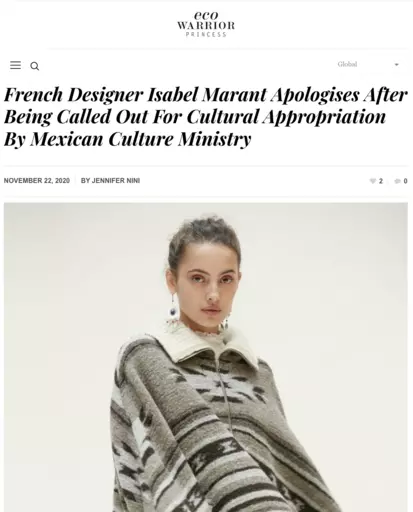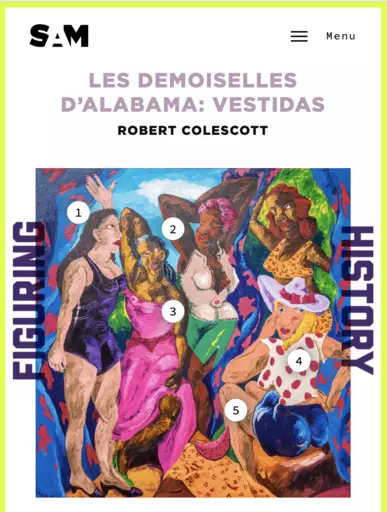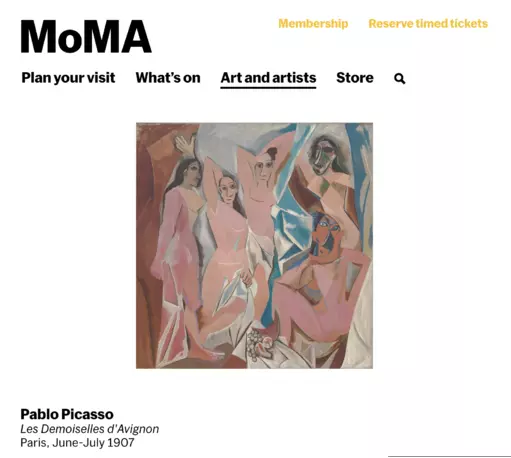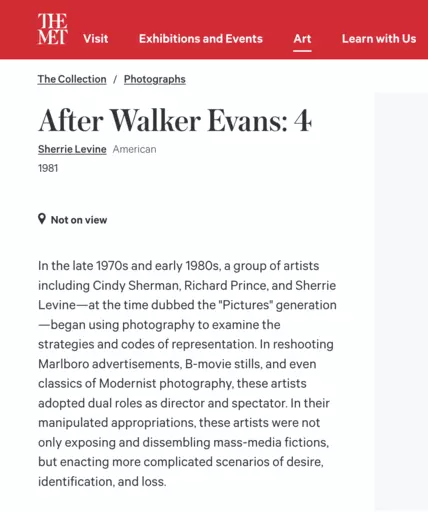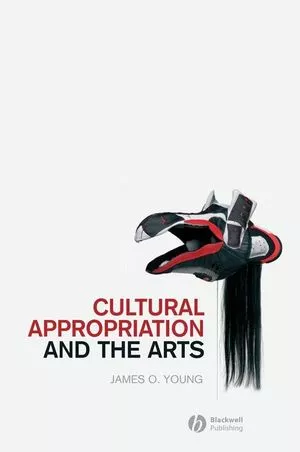
Appreciate, Don’t Appropriate
Renée Akitelek Mboya

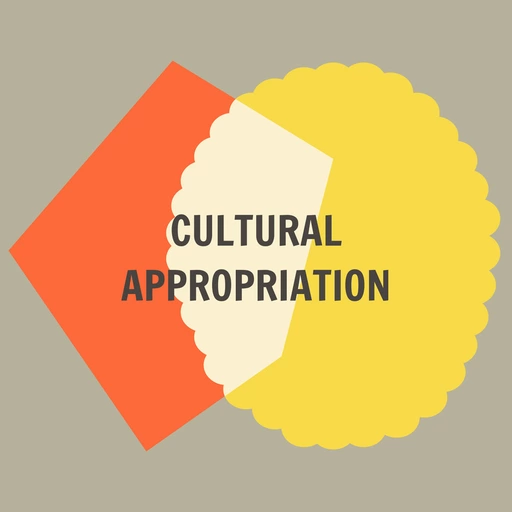
Keywords:
culture, art, appropriation, author, original
What Is Cultural Appropriation?
In 2020, the Mexican Secretary of Culture Alejandra Frausto Guerrero published an open letter accusing French designer Isabel Marant of appropriating designs and symbols belonging to the Purépecha, a group of indigenous people who live in the region of Michoacán in western Mexico. Frausto Guerrero’s letter stated that:Jennifer Nini, ‘French Designer Isabel Marant Apologises After Being Called out for Cultural Appropriation by Mexican Culture Ministry,’ Eco Warrior Princess, November 22, 2020, ecowarriorprincess.net/2020/11/designer-isabel-marant-called-out-cultural-appropriation-by-mexico/.
In the broadest sense of the term, cultural appropriation is the unacknowledged or inappropriate adoption or taking of specific elements (such as ideas, symbols, artefacts, images, art, rituals, icons, behaviour, music, styles) of one culture by another culture.
Adapted from a definition by CSU San Marcos here: csusm-dspace.calstate.edu/bitstream/handle/10211.3/150788/ContextBTS009.pdf.
Helene A. Shugart observes that appropriation occurs when features perceived to belong to a specific culture are used to further the interest of those not sharing that cultural heritage. As she puts it:
Helene A. Shugart, ‘Counterhegemonic Acts: Appropriation as a Feminist Rhetorical Strategy,’ Quarterly Journal of Speech 83 (1997): pp. 210–229.
Cultural appropriation is a nuanced and layered phenomenon, but, in essence, it refers to the use of objects, concepts, symbols or elements of a non-dominant culture in a way that pays little or no regard to their original meaning or purpose. In this respect, the line is drawn when a dominant group makes use of the elements in a way that the non-dominant group finds to be exploitative or overtly harmful. This definition encompasses both objective and subjective notions of harm, noting that, in many respects, dominant culture actors deny or refuse to acknowledge that they are causing harm though cultural appropriation. An understanding of cultural appropriation requires an acknowledgement that it relies on the concurrent existence of neoliberal capitalism and white supremacy.
Cultural appropriation in the arts occurs through the actions of both individual artists as well as major institutions. Currently, the most pressing conversation in respect to the latter is the restitution of looted indigenous cultural artefacts held in (typically Western) museums and private collections around the world.
A loudly contested example of the appropriation and the exploitation of indigenous people by white artists exists in the work of Sam Durant’s Scaffold, originally installed at dOCUMENTA (13) in 2012. The piece made headlines when installed at the Walker Art Centre’s sculpture park in Minneapolis. Protests were held by members of the Dakota/Sioux Nation as a crime of retraumatisation and historical violence, since the sculpture was seen as a careless reference to the execution of 38 Dakota men, who were hung in 1862 under conviction of participating in the Dakota War. The hanging had taken place in Mankato, Minneapolis, not far from the site of the installation. The piece was eventually uninstalled and handed over to members of the Dakota/Sioux Nation, who disposed of it by burial in an undisclosed location. Conversations around this work added to a growing debate around the appropriation and co-option of minority historical and cultural objects. The event also highlights that it is also possible to appropriate ideas, narratives and events.
Hayley A. Rowe, ‘Appropriation in Contemporary Art,’ Inquiries Journal 3, no. 6 (2011): www.inquiriesjournal.com/articles/1661/appropriation-in-contemporary-art.
Stephanie Schwartz, ‘Revolution and After,’ October 158 (2016): pp. 126-154.
Four Key Types of Cultural Appropriation
According to Richard A. Rogers, there areAccording to Richard A. Rogers, there are four key types of cultural appropriation:
Parts of this section are adapted from Richard A. Rogers, ‘From Cultural Exchange to Transculturation: A Review and Reconceptualization of Cultural Appropriation,’ Communication Theory 16, no. 4 (2006): pp. 474-503.
Cultural exchange refers to ‘the reciprocal exchange of symbols, artefacts, rituals, genres, and/or technologies between cultures with roughly equal levels of power.’ Examples of cultural exchange include the adoption of new words across languages; a ‘mutual influence’ on religious beliefs and ritual practices related to the practice of religion; two-way exchanges of music and visual culture and technological exchange. When appropriation happens in this form, it is usually voluntary.
The notion of reciprocal cultural exchange, however, does not account for the fact that the determination of symmetrical or asymmetrical dynamics of power between two cultures or more is complicated by the varying forms that power can take. It also does not consider that agency and ‘constraints on agency’ upset what we might determine to be a ‘voluntary’ exchange. A good example of the question of agency in accessing a voluntary exchange might occur between a native English speaker and a non-native speaker in a context in which English is the dominant language. In this instance, the imbalance is inherent in the language of interaction before the details of the exchange are even established.
Cultural dominance refers to the use of ‘elements of a dominant culture’ by members of a subordinated (often defined as marginalised or colonised) culture in a context in which the dominant culture has been imposed onto the subordinated culture, including appropriations that enact resistance. This form of appropriation relies on a one-directional imposition of value, and often members of the subordinated culture are punished or have their opportunities limited if they are unable or unwilling to comply with the dominant culture. Cultural dominance implies a ‘lack of choice by the subordinated culture’ because the dominant culture has ‘greater cultural, military or economic power.’
One form of cultural dominance is ‘institutional assimilation.’ This includes the use of education, religion, or physical or medical cohesion. Critically, these strategies of assimilation by the dominant culture involve the imposition of culture onto subordinated group and not the appropriation of dominant culture by subordinated cultures. Thus, cultural dominance is a condition under which cultural appropriation might occur.
Cultural exploitation is the ‘taking’ of the subordinate culture for the benefit of the dominant culture: the appropriation of elements of a subordinated culture by a dominant culture without substantive reciprocity, permission, and/or compensation. Subordinated culture is ‘treated as a resource’ to be extracted and exported at the whim and pleasure of dominant culture, including elements which appear to accept or compliment the subordinated culture, but which nevertheless reinforce and promote the position of the dominant culture and extend and augment its cultural, political and economic power.
Like any form of extraction, this type of appropriation can cause faults or ruptures in the subordinated culture’s identity, which is precipitated by a loss of knowledge.
Transculturation involves the merging of ‘cultural elements’ created from and/or by multiple cultures, such that ‘identification of a single originating culture is problematic.’ For example, multiple cultural appropriations structured in the dynamics of globalisation and transnational capitalism creating hybrid forms.
James Lull describes transculturation as ‘a process whereby cultural forms literally move through time and space where they interact with other cultural forms and settings, influence each other, produce new forms, and change the cultural settings.’
James Lull, Media, Communication, Culture: A Global Approach, second edition (New York: Columbia University Press, 2000), p. 242.
Parts of this section are adapted from Richard A. Rogers, ‘From Cultural Exchange to Transculturation: A Review and Reconceptualization of Cultural Appropriation,’ Communication Theory 16, no. 4 (2006): pp. 474-503.
Cultural exchange refers to ‘the reciprocal exchange of symbols, artefacts, rituals, genres, and/or technologies between cultures with roughly equal levels of power.’ Examples of cultural exchange include the adoption of new words across languages; a ‘mutual influence’ on religious beliefs and ritual practices related to the practice of religion; two-way exchanges of music and visual culture and technological exchange. When appropriation happens in this form, it is usually voluntary.
The notion of reciprocal cultural exchange, however, does not account for the fact that the determination of symmetrical or asymmetrical dynamics of power between two cultures or more is complicated by the varying forms that power can take. It also does not consider that agency and ‘constraints on agency’ upset what we might determine to be a ‘voluntary’ exchange. A good example of the question of agency in accessing a voluntary exchange might occur between a native English speaker and a non-native speaker in a context in which English is the dominant language. In this instance, the imbalance is inherent in the language of interaction before the details of the exchange are even established.
Cultural dominance refers to the use of ‘elements of a dominant culture’ by members of a subordinated (often defined as marginalised or colonised) culture in a context in which the dominant culture has been imposed onto the subordinated culture, including appropriations that enact resistance. This form of appropriation relies on a one-directional imposition of value, and often members of the subordinated culture are punished or have their opportunities limited if they are unable or unwilling to comply with the dominant culture. Cultural dominance implies a ‘lack of choice by the subordinated culture’ because the dominant culture has ‘greater cultural, military or economic power.’
One form of cultural dominance is ‘institutional assimilation.’ This includes the use of education, religion, or physical or medical cohesion. Critically, these strategies of assimilation by the dominant culture involve the imposition of culture onto subordinated group and not the appropriation of dominant culture by subordinated cultures. Thus, cultural dominance is a condition under which cultural appropriation might occur.
Cultural exploitation is the ‘taking’ of the subordinate culture for the benefit of the dominant culture: the appropriation of elements of a subordinated culture by a dominant culture without substantive reciprocity, permission, and/or compensation. Subordinated culture is ‘treated as a resource’ to be extracted and exported at the whim and pleasure of dominant culture, including elements which appear to accept or compliment the subordinated culture, but which nevertheless reinforce and promote the position of the dominant culture and extend and augment its cultural, political and economic power.
Like any form of extraction, this type of appropriation can cause faults or ruptures in the subordinated culture’s identity, which is precipitated by a loss of knowledge.
Transculturation involves the merging of ‘cultural elements’ created from and/or by multiple cultures, such that ‘identification of a single originating culture is problematic.’ For example, multiple cultural appropriations structured in the dynamics of globalisation and transnational capitalism creating hybrid forms.
James Lull describes transculturation as ‘a process whereby cultural forms literally move through time and space where they interact with other cultural forms and settings, influence each other, produce new forms, and change the cultural settings.’
James Lull, Media, Communication, Culture: A Global Approach, second edition (New York: Columbia University Press, 2000), p. 242.
Fernando Ortiz, ‘Contrapunteo Cubano del Tabaco y el Azúcar’ (Havana: Jesus Montero Editor, 1940).
Wikipedia, ‘Transculturation,’ en.wikipedia.org/wiki/Transculturation.
These different categories defined by Rogers are used as a way of evaluating the ethics of different forms of cultural interactions and the ways in which they are modified by power dynamics in different physical, social, economic and political contexts.
Cultural Appropriation and the Arts
James Young expounds further on the types of cultural appropriation as related specifically to the arts.James Young,
James Young expounds further on the types of cultural appropriation as related specifically to the arts.
James Young, Cultural Appropriation and the Arts (Hoboken, New Jersey: Wiley-Blackwell, 2008).
He defines object appropriation as that which involves the transfer of tangible works of art such as painting and sculpture from one culture to another. The theft of sculptural objects by British soldiers during the Benin Massacre of 1897 is a hotly debated paradigm case of object appropriation, especially as the question of restitution has come to the fore. Similarly, but on a different scale, Young suggests that a tourist travelling away from their place of origin and seeking to buy a souvenir might also be involved in object appropriation.
Young also proposes that the second type of cultural appropriation specific to the arts is content appropriation, which occurs when the item being appropriated is deemed to be intangible, like a story or a piece of music. An appropriate example here would be that of an artist making significant use of ideas and elements which have originated from another culture or that an artist from another culture first made based on their experiences in that culture. This form of appropriation can also be sub-categorised as style appropriation, which we see, for example, in the case of musicians who are not culturally African American making jazz music.
Third, Young suggests that related to style appropriation in the arts, there is also motif appropriation, which is similar, but instead involves instances in which artists are influenced by the art of another culture without necessarily creating works in the same style. The example given in this instance is Picasso’s use of motifs and ideas from African carving in his painting Les Demoiselles d’Avignon (1907).
Finally, Young proposes a sort of cultural appropriation which fundamentally differs from the aforementioned, which is subject appropriation. This has also been referred to as voice appropriation, and it occurs when one attempts to represent an individual or people or a subject matter outside of one’s own culture or experience.
He defines object appropriation as that which involves the transfer of tangible works of art such as painting and sculpture from one culture to another. The theft of sculptural objects by British soldiers during the Benin Massacre of 1897 is a hotly debated paradigm case of object appropriation, especially as the question of restitution has come to the fore. Similarly, but on a different scale, Young suggests that a tourist travelling away from their place of origin and seeking to buy a souvenir might also be involved in object appropriation.
Young also proposes that the second type of cultural appropriation specific to the arts is content appropriation, which occurs when the item being appropriated is deemed to be intangible, like a story or a piece of music. An appropriate example here would be that of an artist making significant use of ideas and elements which have originated from another culture or that an artist from another culture first made based on their experiences in that culture. This form of appropriation can also be sub-categorised as style appropriation, which we see, for example, in the case of musicians who are not culturally African American making jazz music.
Third, Young suggests that related to style appropriation in the arts, there is also motif appropriation, which is similar, but instead involves instances in which artists are influenced by the art of another culture without necessarily creating works in the same style. The example given in this instance is Picasso’s use of motifs and ideas from African carving in his painting Les Demoiselles d’Avignon (1907).
Finally, Young proposes a sort of cultural appropriation which fundamentally differs from the aforementioned, which is subject appropriation. This has also been referred to as voice appropriation, and it occurs when one attempts to represent an individual or people or a subject matter outside of one’s own culture or experience.
How to Determine When Cultural Appropriation Is Harmful
As we have seen through the different classifications of what actions fall under cultural appropriation, it is clear that all of us, in some circumstance, are capable of causing harm to others though cultural appropriation. Being able to access one’s power in a situation—or speculate as to how individuals or groups might feel at the use of their culture in certain ways—is complicated at the best of times. This is even more true when we are thinking and working across diverse linguistic and geographical contexts. The question, then, is when is cultural appropriation offensive or harmful?Here are some questions we can ask to determine the degree of harm we might cause through our actions:
In relation to these first two points, oppression is defined by the Social Work Dictionary as: ‘the social act of placing severe restrictions on an individual, group, or institution. Typically, a government or political organisation that is in power places these restrictions formally or covertly on oppressed groups so that they may be exploited and less able to compete with other social groups. The oppressed individual or group is devalued, exploited, and deprived of privileges by the individual or group who has more power.’ Robert L. Barker, The Social Work Dictionary, sixth edition (Washington, D.C.: NASW Press, 2014), p. 303.
Further:
Bruce H. Ziff and Pratima V. Rao, Borrowed Power Essays on Cultural Appropriation (New Jersey: Rutgers University Press, 1997).
Roger Wallis and Krister Malm, Big Sounds from Small Peoples: The Music Industry in Small Countries (London: Constable, 1984)
How to Mitigate the Effects of Cultural Appropriation
Strategies for mitigating the negative effects of cultural appropriation might include:It might not always be clear if and when one is appropriating another’s culture, but it generally occurs in the following instances: if you are projecting a skewed or inaccurate perspective of that culture based on misinformation or malice; if you are reinforcing stereotypes about that culture (whether or not you consider these to be negative or positive); if your actions are in conflict with the intended use of those elements; and finally, if you are attempting to take credit for the ideas or ideals encompassed and/or to divert compensation from the original creators to yourself.
Cultural Appreciation
Ultimately, attempting to strategise around a world in which we are all, at some point or another, engaging with each other’s cultures involves a continual assessment of what cultural appropriation is, as well how we might respectfully enjoy and appreciate other people’s cultures. Appreciation is when someone seeks to understand and learn about another culture in an effort to broaden their perspective and connect with others cross-culturally.Appreciation of cultures in general will require you to: have explicit permission to use cultural elements; use them only as intended by the society whose culture they come from; share those items in order to help others learn more about that culture; and finally, emphasise that you are not in any way an authority on the culture and avoid up taking space where other members of that culture might be present and need to be heard. This includes being conscious of the opportunities that come your way as you grow in your perceived knowledge and understanding of that culture and being able to access whether or not it is appropriate for you to take advantage of those opportunities or if, in that instance, it might be possible to pass along the visibility that your privilege affords you.
Context matters when evaluating your position in the event of possible cultural appropriation. Be sure that your intent in engaging with new cultures is to learn and share cultural knowledge without benefitting yourself, and do not participate in any overt demonstrations of culture to which you have not been explicitly invited.
Conclusion
InIn conclusion, it is important to have an understanding of cultures that are new to you and to approach them in the most respectful way possible. Even with the best of intentions, cultural appropriation tends to belittle or mock subordinated cultures in ways that cause immediate and permanent harm to the cultures in question. Sacred traditions come to be misrepresented for profit and, in many cases, the romanticisation or sexualisation of cultures perpetuate stereotypes and racism. In addition, there are many practices that can never really be appreciative of subordinated cultures. Always avoid dressing up as someone from another culture as a costume; wearing blackface/yellow-face; wearing clothing or jewellery with religious or spiritual significance when you don’t practise that religion; and steer clear of any behaviour that stereotypes or puts down members of another culture.
In expanding our knowledge of the rich and beautiful cultures that surround us, we build our communities and help preserve the best of culture for generations to come.
In expanding our knowledge of the rich and beautiful cultures that surround us, we build our communities and help preserve the best of culture for generations to come.
Online Course
Want to delve further into the topic of this essay? Then take a look at the corresponding lesson that is part of anWant to delve further into the topic of this essay? Then take a look at the corresponding lesson that is part of an online course that consists of 10 lessons based on the 10 essays in this publication. These lessons focus on the central concepts that are treated in the essays and are followed by various questions, assignments and/or work formats.
The entire online course, including an extensive introduction, can be found via the button below. If you want to go directly to the assignments for this essay, click here.
The entire
Want to delve further into the topic of this essay? Then take a look at the corresponding lesson that is part of an online course that consists of 10 lessons based on the 10 essays in this publication. These lessons focus on the central concepts that are treated in the essays and are followed by various questions, assignments and/or work formats.
The entire online course, including an extensive introduction, can be found via the button below. If you want to go directly to the assignments for this essay, click here.
Reading List
James Young expounds further on the types of cultural appropriation as related specifically to the arts.
James Young, Cultural Appropriation and the Arts (Hoboken, New Jersey: Wiley-Blackwell, 2008).
He defines object appropriation as that which involves the transfer of tangible works of art such as painting and sculpture from one culture to another. The theft of sculptural objects by British soldiers during the Benin Massacre of 1897 is a hotly debated paradigm case of object appropriation, especially as the question of restitution has come to the fore. Similarly, but on a different scale, Young suggests that a tourist travelling away from their place of origin and seeking to buy a souvenir might also be involved in object appropriation.
Young also proposes that the second type of cultural appropriation specific to the arts is content appropriation, which occurs when the item being appropriated is deemed to be intangible, like a story or a piece of music. An appropriate example here would be that of an artist making significant use of ideas and elements which have originated from another culture or that an artist from another culture first made based on their experiences in that culture. This form of appropriation can also be sub-categorised as style appropriation, which we see, for example, in the case of musicians who are not culturally African American making jazz music.
Third, Young suggests that related to style appropriation in the arts, there is also motif appropriation, which is similar, but instead involves instances in which artists are influenced by the art of another culture without necessarily creating works in the same style. The example given in this instance is Picasso’s use of motifs and ideas from African carving in his painting Les Demoiselles d’Avignon (1907).
Finally, Young proposes a sort of cultural appropriation which fundamentally differs from the aforementioned, which is subject appropriation. This has also been referred to as voice appropriation, and it occurs when one attempts to represent an individual or people or a subject matter outside of one’s own culture or experience.
